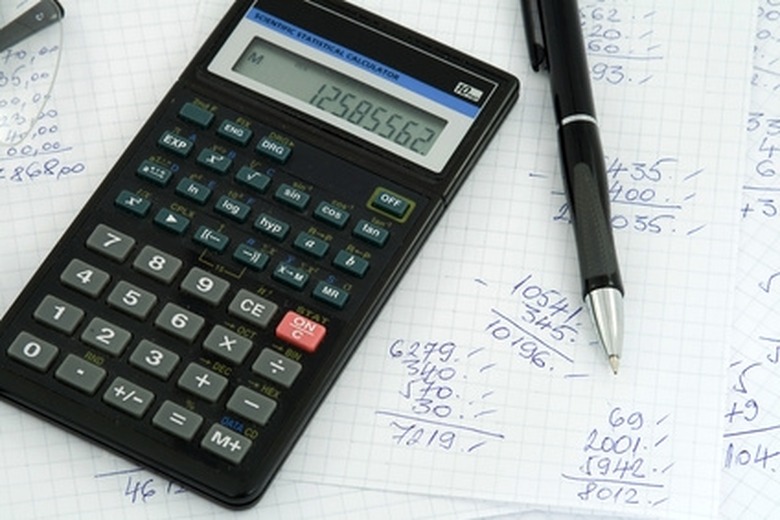How To Convert Density To Pressure
There is a mathematical relationship between density and pressure. The density of an object is its mass per unit volume. Pressure is force per unit area. Knowing the volume and density of an object enables its mass to be calculated, and if you know the mass resting on an area, you know the pressure. Anyone with basic math skills can calculate the pressure exerted by a volume of material with a known density.
Step 1
Enter the density of the material into a calculator. For example, for a material with a density of 1,025 lbs. per cubic yard, type 1,025 into the calculator.
Step 2
Establish the number of units of the material that are applying pressure. For example, a column 1 yard wide and 11 yards tall contains 11 cubic yards of material. Multiply the material density by the number of units in the column. In this example, multiply 1025 by 11. The result is the mass of 11 cubic yards of the material.
Step 3
Calculate the pressure by dividing the force, or weight, by the area. In the example, 11 x 10,275 gives a weight of 11,275 lbs. resting on one square yard. The pressure exerted by that material is thus 11,275 / 1 or 11,275 lbs. per square yard.
TL;DR (Too Long; Didn't Read)
In textbooks and on science websites you will find density measured in kilograms per cubic meter. Grams per cubic centimeter are also used.
The density of pure materials is listed in tables and on-line. Impure materials, such as soil, vary in density and it is best to measure them yourself.
Warning
The actual pressure exerted on an object includes atmospheric pressure — allow for this in your "real world" calculations
You should not use customary units in scientific experiments or outside the U.S. where the international and metric units are preferred.
Cite This Article
MLA
Robinson, David. "How To Convert Density To Pressure" sciencing.com, https://www.sciencing.com/convert-density-pressure-8016465/. 24 April 2017.
APA
Robinson, David. (2017, April 24). How To Convert Density To Pressure. sciencing.com. Retrieved from https://www.sciencing.com/convert-density-pressure-8016465/
Chicago
Robinson, David. How To Convert Density To Pressure last modified August 30, 2022. https://www.sciencing.com/convert-density-pressure-8016465/
